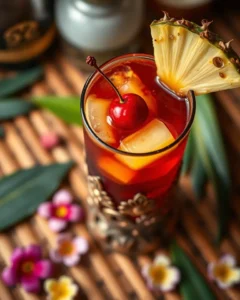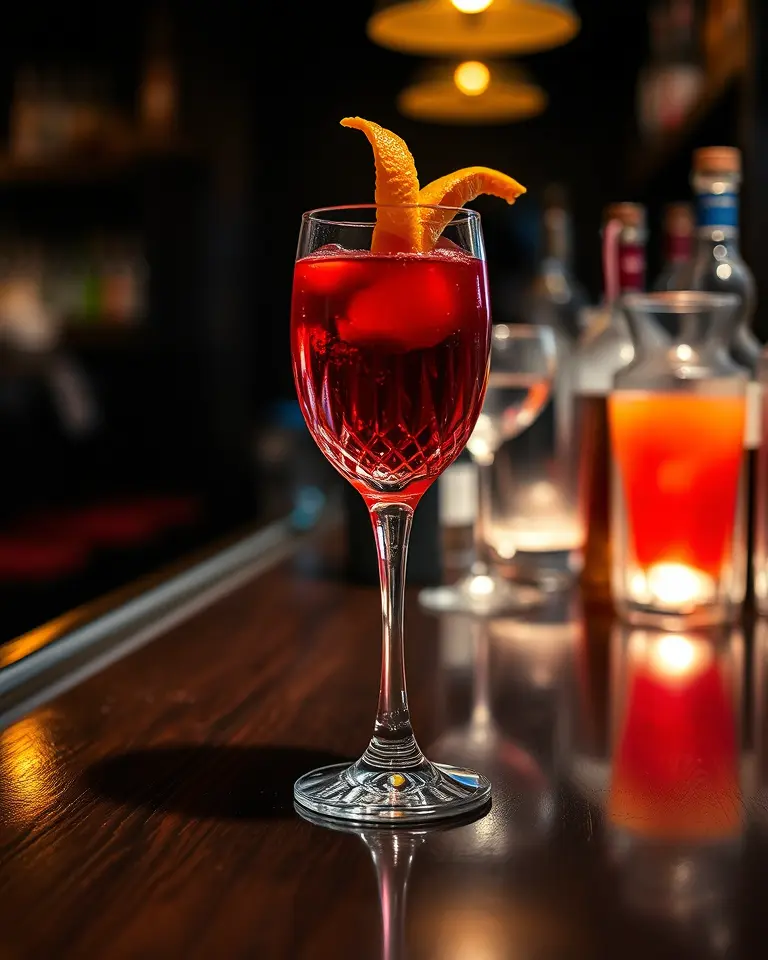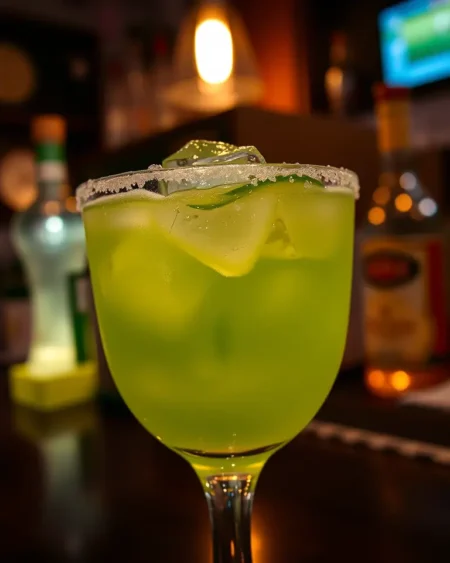The Negroni, with its vibrant red hue and complex flavor, stands as a testament to the enduring appeal of classic cocktails. This simple yet sophisticated drink, composed of equal parts gin, Campari, and sweet vermouth, has captivated drinkers for over a century, finding its place in the hearts of both casual sippers and cocktail aficionados.
The Birth of a Bitter Classic
While the exact details are debated, the most widely accepted origin story traces the Negroni back to Florence, Italy, in 1919. Count Camillo Negroni, a frequent patron of Caffè Casoni (now Caffè Giacosa), reportedly requested that his usual Americano cocktail be strengthened with gin instead of soda water. The bartender, Fosco Scarselli, obliged, adding an orange garnish instead of the lemon typically used for the Americano. This new concoction was initially known as the “Count Negroni-style Americano” before eventually being called simply a Negroni.
The drink quickly gained popularity, becoming a staple during the Italian aperitivo hour. The Negroni’s unique balance of bitter, sweet, and botanical notes made it a distinctive and memorable cocktail, solidifying its place in cocktail history.
Crafting the Perfect Negroni
The beauty of the Negroni lies in its simplicity. The equal-parts ratio of ingredients makes it an easy cocktail to remember and prepare. Here is a step-by-step guide to creating the perfect Negroni:
- Gather your ingredients: You’ll need gin, Campari, and sweet vermouth.
- Combine: In a mixing glass filled with ice, pour in equal parts of each ingredient (typically 1 ounce or 30ml of each).
- Stir: Stir well for 15-30 seconds until the mixture is thoroughly chilled.
- Strain: Strain the mixture into a rocks glass over a large ice cube or fresh ice.
- Garnish: Express an orange peel over the top of the drink to release its oils, and then use it as a garnish.
Key Ingredients
- Gin: A quality London Dry Gin is traditionally recommended for the Negroni. Its juniper-forward profile pairs harmoniously with the other components. Popular brands include Tanqueray, Beefeater, Bombay Sapphire, and Gordon’s. Some prefer Navy Strength Gins that have a higher proof and can stand up to Campari. Others may experiment with botanical-forward gins.
- Campari: This is the crucial bitter component, providing the Negroni’s signature red color and complex herbal notes. While other red bitters exist, Campari remains the classic choice.
- Sweet Vermouth: Also known as red vermouth, this ingredient provides sweetness and depth to the cocktail. Cocchi di Torino is frequently cited as an excellent choice, offering a balanced, aromatic profile. Other great options include Carpano Antica Formula, Dolin Rouge, and Martini Riserva Speciale Rubino.
Tips for the Best Negroni
- Use quality ingredients: The quality of the gin and vermouth significantly impacts the final flavor of the drink.
- Measure accurately: Precise measurements are crucial for maintaining the balance of the cocktail.
- Stir, don’t shake: Stirring helps achieve proper chill and dilution without over-diluting the cocktail.
- Serve chilled: Serving the Negroni in a chilled glass will help it stay cold longer, especially if serving “up” without ice.
- Use a large ice cube: A large ice cube melts slower, minimizing dilution.
The Strength and Serving of a Negroni
The Negroni is considered a strong cocktail because it consists entirely of alcohol. The average alcohol content is around 24% ABV (48 proof). Therefore, it’s best enjoyed slowly, taking small sips. The chilling and dilution from stirring it with ice does reduce the burn often associated with stronger cocktails.
The Negroni can be enjoyed as an aperitif before dinner, with its bitter notes stimulating the appetite. It’s also appropriate as a digestivo, helping with digestion after a meal.
The ideal serving temperature is around 8°C (46°F), which is best achieved by chilling the glass and stirring the cocktail with plenty of ice. It can be served on the rocks or “up” in a chilled coupe glass without ice.
Food Pairings
The Negroni’s distinct bitterness makes it a versatile drink that pairs well with various foods. Here are some excellent options:
- Charcuterie and Cheese: Salty, bold flavors complement the bitterness of the cocktail. This includes cured meats like salami, prosciutto, and chorizo. Pair with cheeses like Parmesan, Pecorino, and blue cheese. Olives are also a great addition to the spread.
- Citrus-infused Dishes: The orange garnish in a Negroni makes citrus-forward dishes an excellent pairing choice. Lemon chicken, orange and fennel salad, and citrus-marinated seafood are excellent options.
- Seafood: The delicate, briny taste of fresh seafood, especially shellfish like mussels, shrimp, and crab, highlights the cocktail’s bitter and sweet notes.
- Grilled Vegetables: The caramelized sweetness of grilled vegetables, such as bell peppers, zucchini, eggplant, and asparagus pairs well with the Negroni’s bitterness.
- Pizza: A classic Margherita pizza, with its combination of tangy tomato sauce, creamy mozzarella, and fresh basil, is a natural fit for the Negroni.
Variations on the Classic
While the classic Negroni is hard to beat, many variations have emerged over the years. Here are some of the most popular:
- White Negroni: This variation replaces the Campari and sweet vermouth with Lillet Blanc and dry vermouth, resulting in a lighter, citrusy cocktail.
- Negroni Sbagliato: This version swaps the gin for Prosecco, creating a sparkling and bubbly alternative.
- Boulevardier: This variation replaces the gin with whiskey (usually bourbon), creating a richer, more robust cocktail.
- Mezcal Negroni: By substituting the gin for mezcal, you get a smoky, earthy twist on the classic drink.
- Cynar Negroni: Cynar, an artichoke-based bitter liqueur, is used in place of Campari for a more vegetal, slightly less bitter cocktail.
- Kingston Negroni: This variation uses Jamaican rum instead of gin for a tropical twist.
- Coconut Oil-Washed Negroni: Using a coconut oil-washed gin will add a tropical note to a standard Negroni.
- Enzoni: This version muddled green grapes replace the sweet vermouth.
The Enduring Appeal
The Negroni has stood the test of time, remaining a popular choice among cocktail enthusiasts for over a century. Its simple recipe, complex flavor profile, and versatility have made it a true classic. Whether you enjoy it as an aperitif, digestivo, or simply as an everyday tipple, the Negroni offers a sophisticated and satisfying drinking experience. Its ability to be both refreshing in the summer and warming in the winter adds to its year-round appeal. From its origins in a Florentine café to its place on cocktail menus worldwide, the Negroni’s rich history and enduring charm continue to make it one of the most iconic and celebrated drinks in the world.







